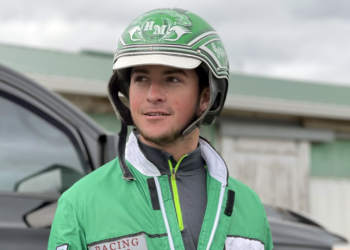Over the years, New Zealand has been blessed with some very good two year old trotters, and although traditionally the stakes for these harness racing juveniles have been well behind their pacing counterparts, there’s now a pathway to head down and some good stake money to be won for two year old square gaiters.
New Zealand has some seen some very good two year old trotters over the past five decades. Spartan Prince (Tuft) won five of six in the 1976 season, Mister Square (Tuft) won all five in his two year old year of 1981, Lord Alias (Alias Armbro) won four of his six starts in 1983 while in 1993 Our Super Force (Penrod Eden) won six of seven.
Sundon (Arndon) was undoubtedly New Zealand’s standout young trotter over that time. He won all his eleven starts as a two year old and as a stallion he had a marked influence on the New Zealand trotting breed.

Other two year olds that dominated in their year were The Fiery Ginga (CR Commando), Royal Aspirations (Monarchy) which won five of his ten starts at two and still holds the New Zealand 1609 metre record of 1-56.5 and Enhance Your Calm (Majestic Son) who won all his five starts at two.
Flying Isa (Pegasus Spur) was the first two year old gelding trotter to post a sub two minute mile. He won eight of his eleven starts at that age and Jo Anne (Sundon) was the first trotting filly to run a sub two minute mile. Her time of 1-58.1 stood as a New Zealand record for twenty years until Double Delight (Bettor’s Delight) beat it by .1 of a second.
Jo Anne’s brother Dependable (Sundon) was also a smart two year old trotter, winning four of his six starts.
The Paramount name is prominent in the two year old trotting ranks with Paramount Gee Gee (Pegasus Spur) Paramount Queen (Love You) and Paramount Gem (Earl) featuring. Paramount King (Love You) was New Zealand Two Year Old Trotter of the Year 2016/2017.
In more recent years Muscle Mountain (Muscle Hill) won four of his six starts and High Energy (Father Patrick) was unbeaten last season in her five starts as a two year old.
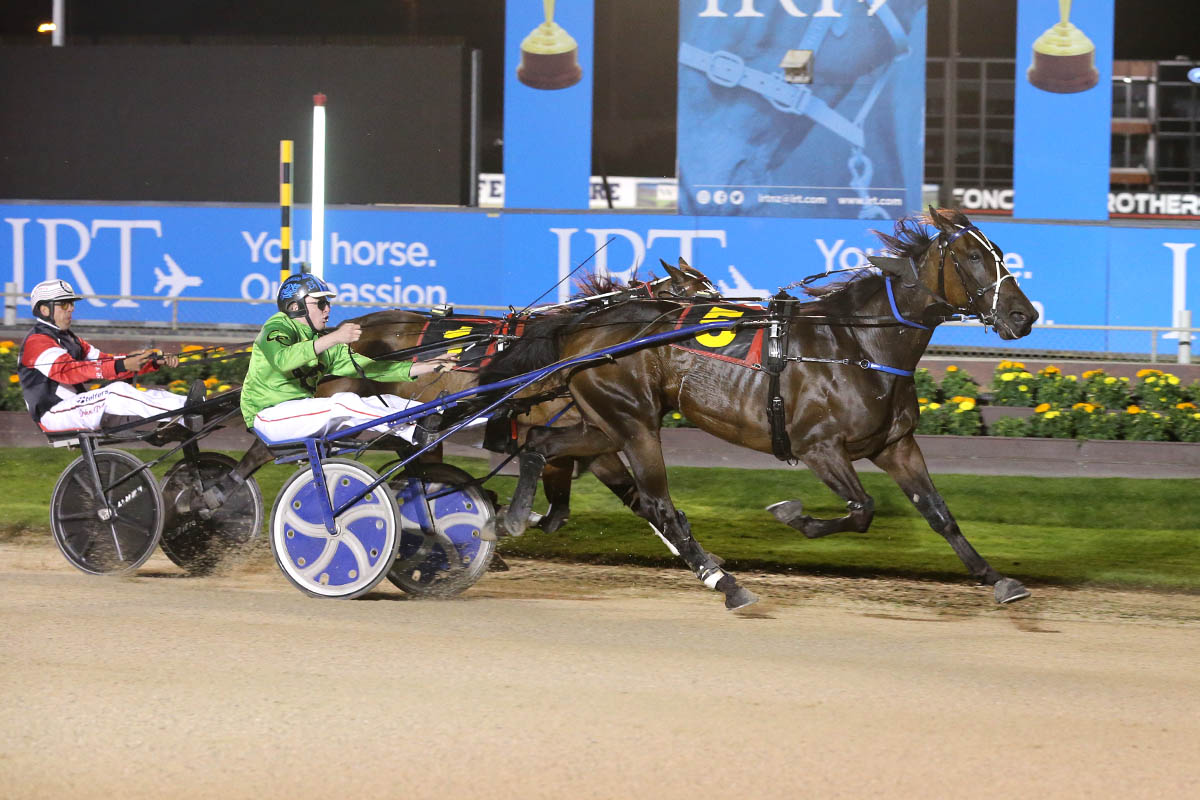
Some breeders who traditionally just bred pacers are now getting more serious about breeding trotters because an increase in demand means better prices at the sales.
The highest selling yearling trotter in recent times was sold at the 2020 Christchurch sale when Emilio Rosati paid $280,000 for a Love You – Queen Kenny colt (Toro Stride).
At last year’s sales Barry Purdon and Scott Phelan paid $145,000 for a Father Patrick – Luby Lou colt while Greg and Nina Hope paid $130,000 for a Muscle Hill – Paramount Faith filly who’s a full-sister to their star trotter Muscle Mountain.
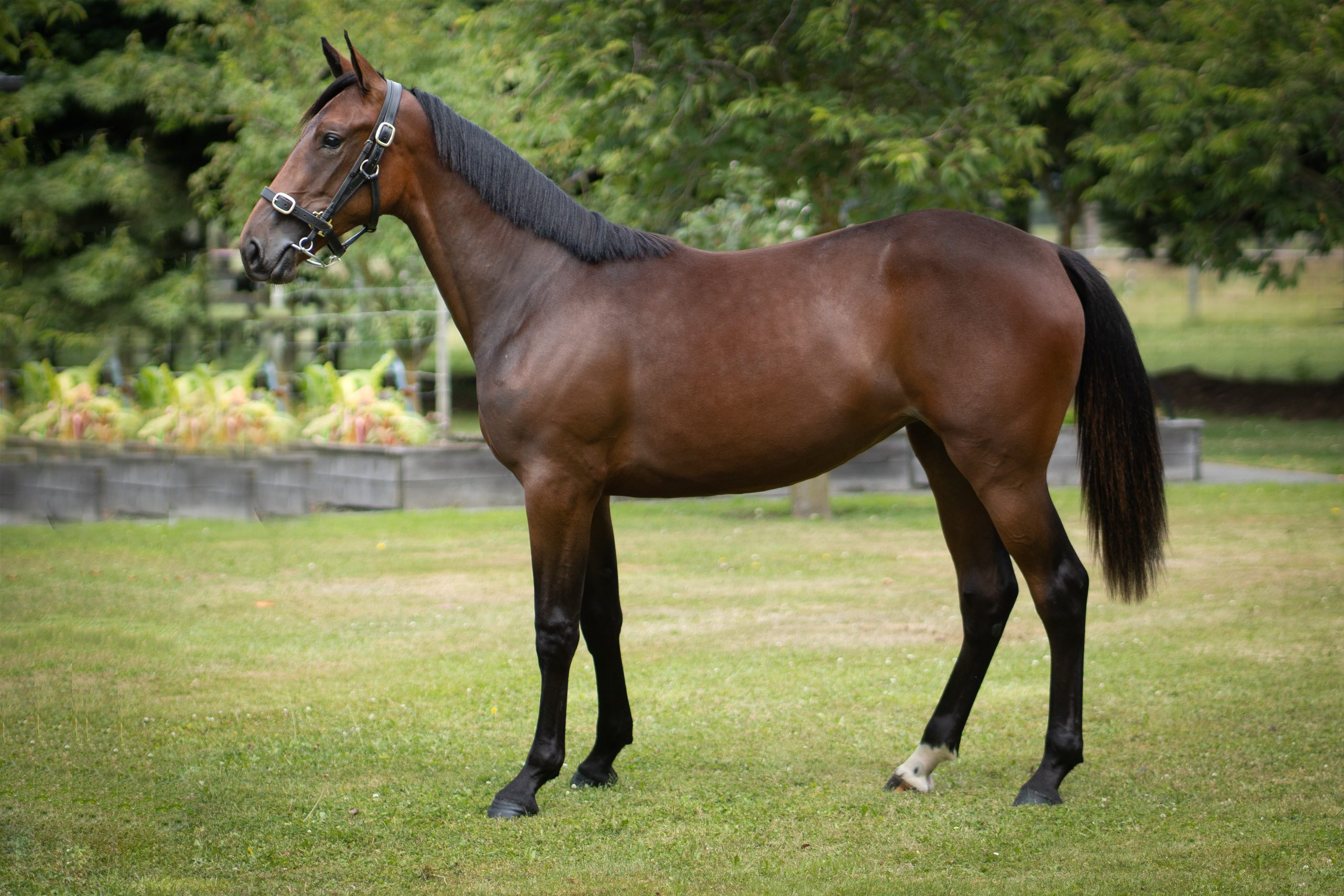
The juvenile trotters have certainly got faster and the record that best demonstrates that is the 1980 metre mobile.
Enhance You Calm’s 2018 record was 2-51.9 but in the space of a season (2019) Muscle Mountain lowered it to 2-38.1, then 2-29.9 and finally to 2-29.1; a massive 22.8 seconds difference. Later that season Ultimate Stride (Love You) lowered the mark to 2-27.7 and in 2022 Confessional (Father Patrick) dropped the time to 2-25.5.
This season there’s a strong crop of two year old trotting fillies with The Moonstone (Monkey Bones), We Can Have It All (Volstead), Princess Sadie (Muscle Mass), Black Pat (What The Hill), Kracka Looka (Father Patrick), Empire City (Volstead) and Yosemite (Volstead).
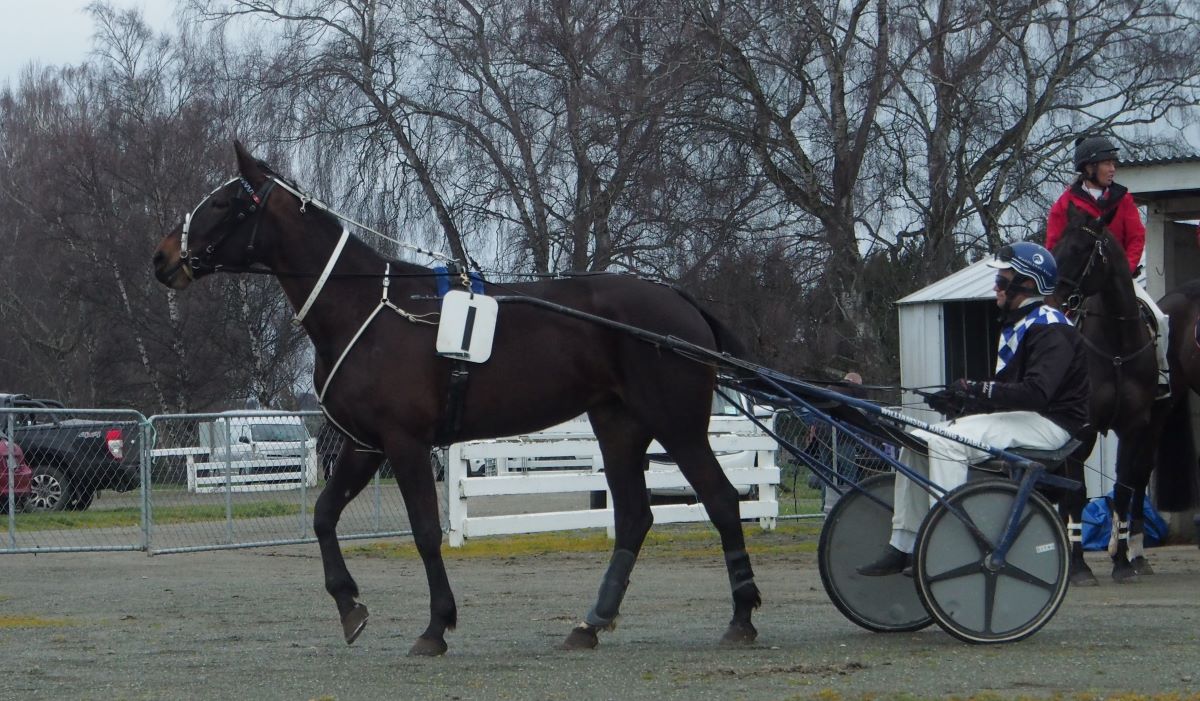
And there are plenty of talented colts and geldings including Paramount Kiwi (Father Patrick), Dreams Pat (Father Patrick), Wilma’s Boy (Tactical Landing), Bring On The Muscle (Majestic Son) and Head Em Up (Waterloo Sunset).
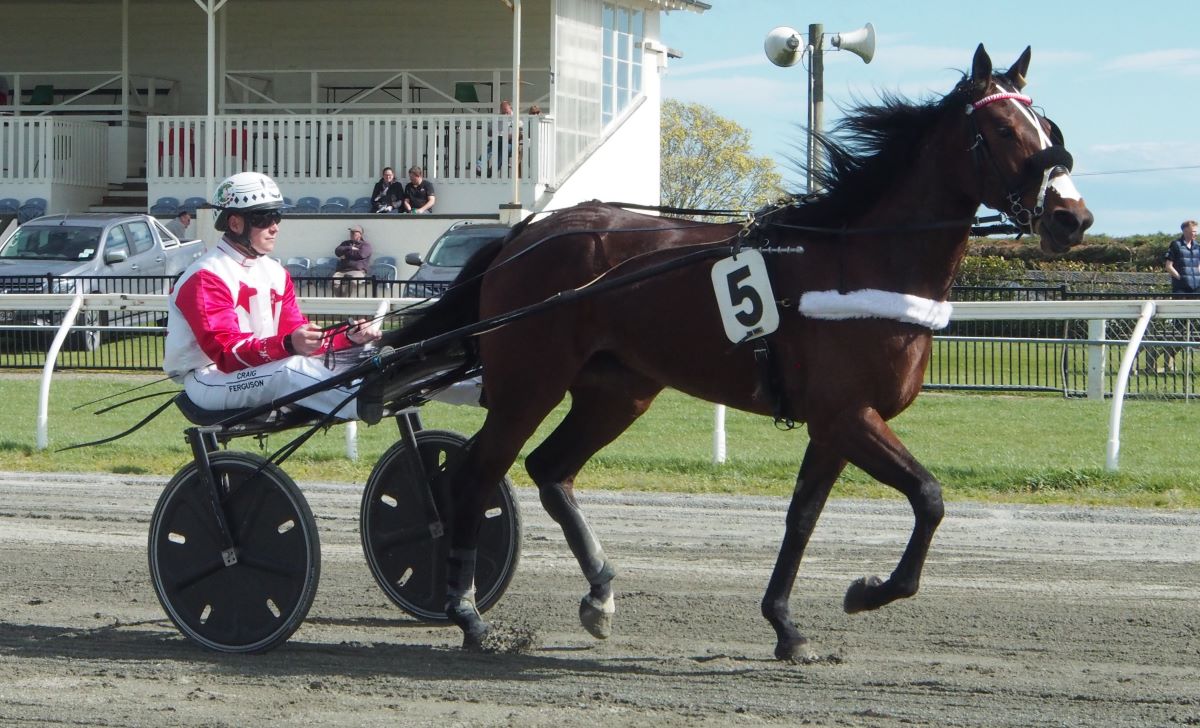
So what makes a two year old trotter?
“Quality is the key. Once you’ve been doing it for a while you know how to prep them to trot solid. I guess it’s experience,” says Phil Williamson New Zealand’s leading trainer of trotters.
This season the Oamaru based trainer has a host of talented young trotters, more than he’s had in a long time.
“I’m not doing so many outside horses now and I’ve had more time to spend on my own. Hence we’ve produced a few two year olds.”
He says he enjoys working with young stock and that generally they need to be trained on type.
“If you’ve got a great big horse and a small one you’ve got a massive difference in strength. The wee one will be strong and the big one will be weak. So you must work around that right from the start. With your stockmanship you figure out how much you can give that horse. It just might need more breaks, but it doesn’t mean it has any less ability. I don’t believe a big horse can’t race at two. It’s down to their ability and their makeup. If they haven’t got the attributes like speed and gait, they probably can’t.”
Williamson says the first twelve months of a foal’s life are the most important.
“They should never have a day without being fed. People that have a foal in a half acre paddock – no good. You’ve got to grow them out. It’s like fattening any stock.
He says horse breeders should take their cue from how well good dairy farmers feed their stock.
“They force feed their cows with the best nutritional food. That’s what brings the return. If dairy farmers dabble with horses, they’re generally very successful because they know how to grow them out properly. The best advice I could give is if you’ve got a foal on a mare give it to someone who’s got a dairy farm, let them run on twenty acres and never want for food until it’s old enough to be broken it. As long as it gets a good start in those first twelve months, after that it’s not as crucial. You can fix them but it’s like putting a patch on”.
He says good rolling hill country is the perfect place to get a young horse well-muscled.
“It’s all common sense and if you have those tools, it’s a massive step in the right direction.”
He says with access to the best trotting breeds in the world New Zealand’s young trotting stocks have improved markedly.
“Going back when I started, a trotter was just a pacer that couldn’t make it pacing. Nowadays we’ve imported trotting breeds from all over the world. We’re not getting their second string stallions, we’re getting their best. And that’s done wonders for our breed. We’ve still got a fair way to go to catch up. I was watching the two year old trotters go in America, and they went 1-51. I think the gait of the young horses these days is better and it’s a lot easier to turn them into two year olds.”
He says the stakes and pathway for young trotters should encourage owners to buy into the trotting gait and have their horses running early.
“Why would you want to give your horse another year when you can win money this year. As soon as you can get a return for the owners the better. The owners like it that way and I do as a trainer. Looking at the stakes now and into the future it’s all upwards.”
He says he can generally tell if a young horse is going to win races.
“I’ve got a couple of foals in the paddock and I know they’re going to be winners by the way they’re running around.
With more high end trotting yearlings being offers at the yearling sales Williamson says there’s an opportunity to buy stock that’s going to give a better return than in the past.
“Trotters can earn and earn well. No one wanted galloping trotters twenty years ago and at the sale you could buy them for tuppence. Nowadays they command good value because people see they can earn a lot of money, just like Majestic Man (Majestic Son). He’s won over $800,000. There are not many horses of either gait in New Zealand now that have won more than that. If you go through my stable as an example most of them are on the right side of the ledger earning wise.”
At February’s yearling sales in Christchurch Phil and wife Bev will offer a Bold Eagle – Kenny’s Dream colt.
Kenny’s Dream (Dream Vacation) won eight races over four seasons and just thirty three starts.
“She was a beautifully gaited trotter. Dream Vacation is renowned on the world stage as a broodmare sire. Kenny’s Dream raced in an Interdominion series, so she was handy.
You’d like to think that sending her to Bold Eagle would only enhance the foal.”

Williamson says it may get harder to sell our young horses to Australia as our Tasman neighbours continue to buy some of our good breeding stock.
“Agents tell me it’s getting harder because we’ve shot ourselves in the foot because we’ve sold a lot of our mares and fillies to Australia and now they’ve got a lot of our breeds and they’re going good with their offspring.”
He says Funky Monkey (Monkey Bones) is a good example. She won twice for Williamson before he sold her to Australia where she’s gone on to win another fourteen races.
“She was a handy wee mare. She’s gone 1-52 (placed) at Menangle. The next thing they’re going to be breeding horses out of her and less likely to be ringing me up and asking for one out of that family. That’s what happens when you sell your assets but to stay viable you’ve got to sell some.”
Williamson also says the barrier draw for trotters racing in mobile events are not so crucial.
“In a pacing race the draw is crucial but it’s not in a trotting race. In a pacing race if you draw the outside of the second row in a mobile short distance race it’s difficult. Whereas a trotter could still get money.”
Plenty of positive signs ahead for juvenile trotting and in looking at the quality of this year’s crop, some competitive racing lies ahead for some good money.
by Bruce Stewart, for Harnesslink

 USA
USA Canada
Canada Australia
Australia New Zealand
New Zealand Europe
Europe UK / IRE
UK / IRE

